Graffiti vs Regime
The early stages of the quota reform movement in Bangladesh saw the use of a subtle yet powerful language of protest: graffiti. University students, who were at the forefront of the Anti-discriminatory Student Movement that started in July, used public walls and streets to express their anger and frustrations as a potent form of resistance. These expressions, painted boldly in public spaces, became symbols of defiance against an oppressive regime.
Slogans like "No signal," "Pani lagbe pani?" (Do you need water?), and "Desh ta karo baaper na" (The country does not belong to anyone's father) echoed the frustration of a generation unwilling to be silenced. Who can forget the graffiti "Chaite gelam odhikar, hoye gelam Razakar (We asked for rights and you tagged me as a traitor)", which was a reflection of the sentiment of youth against the prevailing culture of tagging.
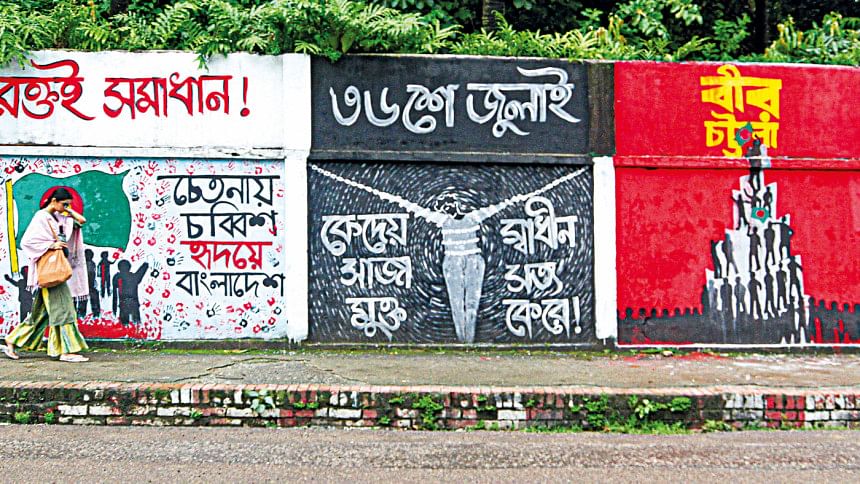
These strong messages helped ignite a movement that ultimately toppled an autocratic government that had ruled with an iron fist for more than 15 years.
As the government increasingly restricted free speech, cracked down on political dissent, and implemented internet shutdowns, graffiti became a critical tool for protest. It allowed students to voice their dissent in a way that was visible, accessible, and difficult to censor. Public walls turned into canvases of resistance, where the youth painted their grievances and aspirations.
Graffiti as a form of protest is not new to Bangladesh. In our struggle leading to the Liberation War and in the political upheavals of the 1980s and 1990s, graffiti was used by various groups to voice dissent. However, the wave of graffiti during the quota reform movement was distinct in a sense that it involved a generation many had presumed to be politically detached. This new generation's graffiti not only expressed specific political grievances but also raised broader issues of social justice and human rights.
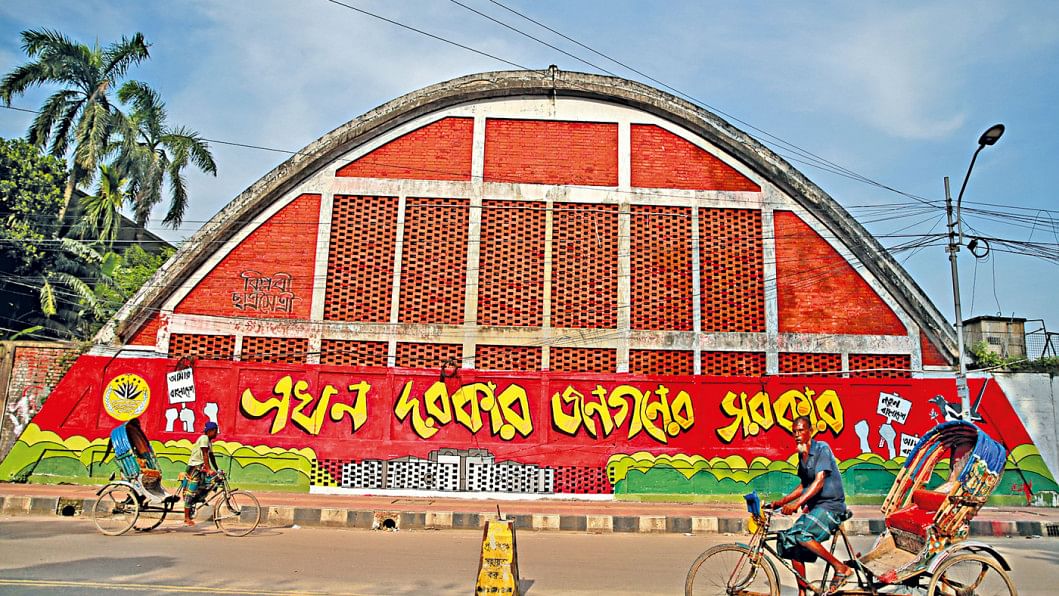
Their work reflected deep emotions -- stories of betrayal, hope, and resistance. The walls of cities were splashed with colours -- bright reds, greens, blacks -- each stroke carrying a message. Anti-government and pro-democracy slogans covered walls and streets, while images of mosques, churches, temples, and pagodas called for coexistence and secularism.
When protests turned violent, graffiti captured the brutality. One powerful image depicted student activist Abu Sayed standing unarmed, arms stretched out, holding only a stick, facing police brutality. This image, etched on walls across the country, became a symbol of courage against a merciless authoritarian government -- a visual reminder of the sacrifice made by those who stood up for their rights.
Public spaces became storytellers of the resistance. Graffiti depicted the police attempting to silence protesters by covering their mouths. The portrayal of Mugdho, a student, handing out bottles of water to fellow protesters while struggling to cope with tear gas just minutes before he was shot in the head, will be forever in our memory. His final words, "Pani lagbe, pani?" became a symbol of the selflessness of the young protesters. His graffiti has become a part of our collective memory.
Throughout July 2024, a series of increasingly violent protests erupted in Bangladesh. For every unjust act, students responded with graffiti and other forms of visual art, showcasing the government's disregard for human rights and excessive use of violence. This persistence in the face of oppression helped to turn the student protest into a people's uprising.
It was inspiring to see students from schools, colleges, madrasas, and universities come together, using public spaces to protest through witty slogans and powerful images. 'If you repeat a lie often enough it becomes politics instead' (they scratched off the word truth and replaced it with politics). They documented the stories of scores of martyrs like Abu Sayed and Mugdho who were mindlessly killed during the violence.
Even after the fall of the government, students continued to draw graffiti, repainting erased images, and creating new ones on the ruins of burned-down buildings in areas like Dhanmondi, Agargaon, and Uttara -- hotbeds of the violence. Their graffiti focused on themes of secularism, human rights, freedom of the press, and clean politics against autocracy and anarchism.
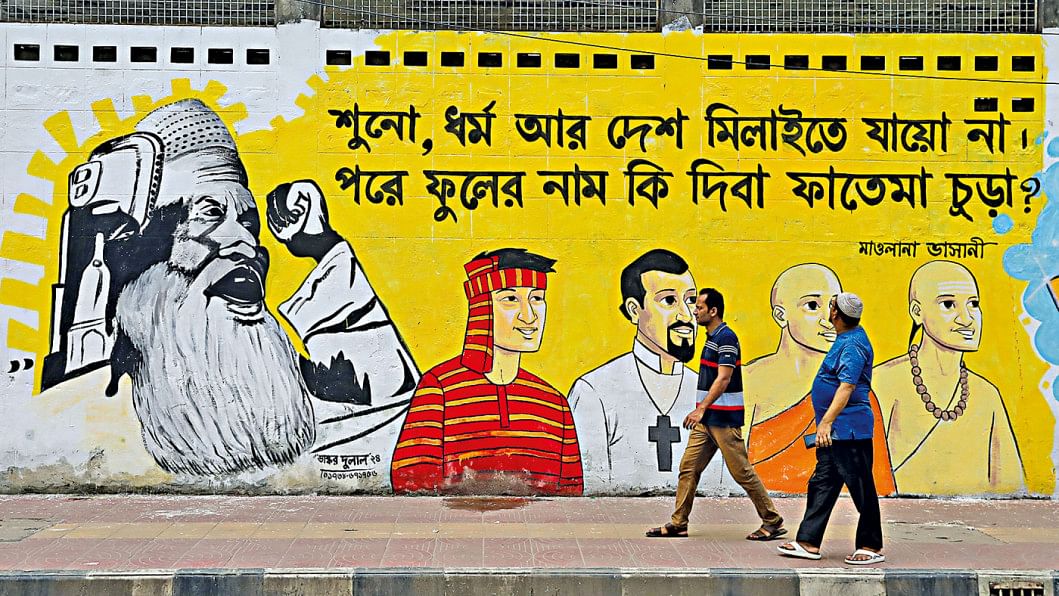
"Bangladesh is a resilient nation, shrouded in geopolitical problems. We love to raise our voice. We are opinionated, and we are driven by emotions," said rights activist Shahana Huda.
"Drawing graffiti in public spaces gave our frustration and desperation an animated expression," she said, noting that this informal expression of anger and resistance of youth captured the attention of both the authorities and adults who had chosen to remain silent.
"Graffiti, often created in defiance of the system on public property, is typically deemed illegal by authorities. This illegality is intrinsic to its role as a form of protest and rebellion. If graffiti is created with permission, it becomes a mural, losing its rebellious edge," explained Syed Rashad Imam Tanmoy, a cartoonist and graphic novelist. He sees graffiti as akin to cartoons -- both are forms of visual communication that must be quick and easy to understand. "Throughout history, when oppressive regimes controlled public media to suppress voices, people took to public spaces to express their opinions through graffiti," Tanmoy added.
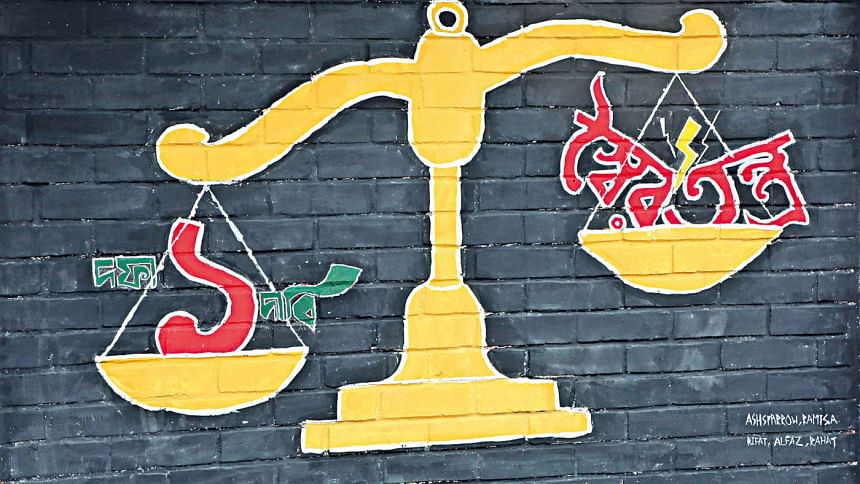
This time around, young people from all backgrounds used graffiti to voice their rebellion. They owned the consequences and demanded justice, and many adults found themselves relating to the bold thoughts they had not dared to articulate.
For photographer Farhana Setu, a graffiti image of a man running with a cage and a sun trapped inside it, drawn around 2017 with the words "Subodh tui paliye ja, ekhon shomoy pokkhe na" (Get away Subodh, time is not on your side), spoke volumes. 'Subodh,' metaphorically, means good sense and reasonable judgment. "I felt as if I was the one trapped inside the cage, unable to speak out against the social and political injustice around me. But this time, I saw the graffiti again on Fuller Road, with a slight alteration that said: 'Subodh fireh esheche' (Subodh has returned). I was elated! These kids taught us to talk back," Setu says.
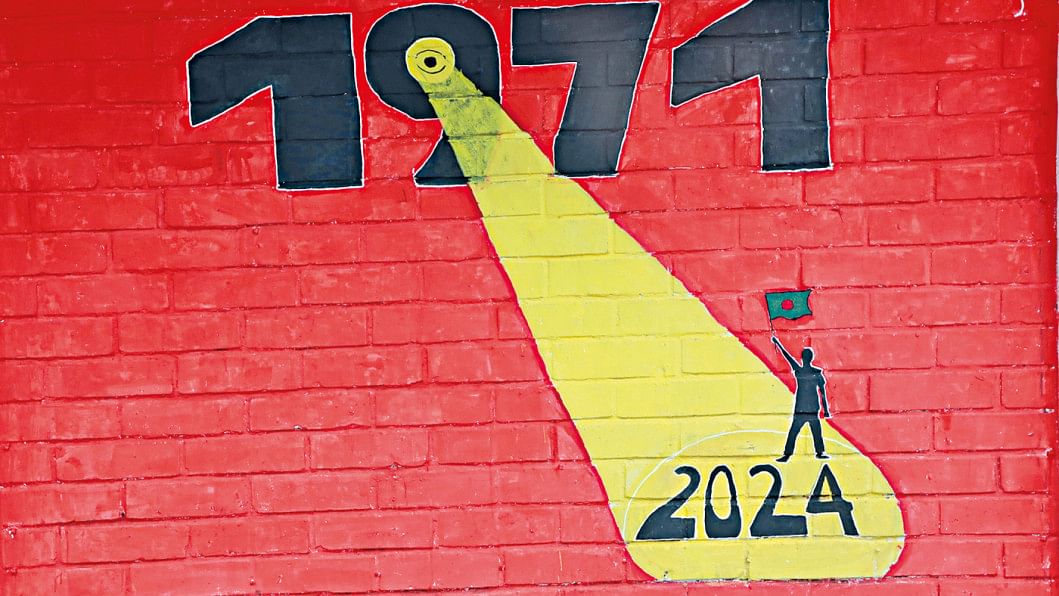
Morshed Mishu, assistant editor of UNMAD Magazine, believes the street art that students enthusiastically created at the beginning of the quota reform movement exposed the brutal suppression and moral bankruptcy of the ruling party. "The way students expressed their souls' content through graffiti, this should be called the 2024 renaissance. They rewrote history by fighting for their rights, taking a stance against corruption and extremism, and ultimately toppling an autocratic regime. After the initial success, they continued to voice their concerns about reform through graffiti," Mishu said.
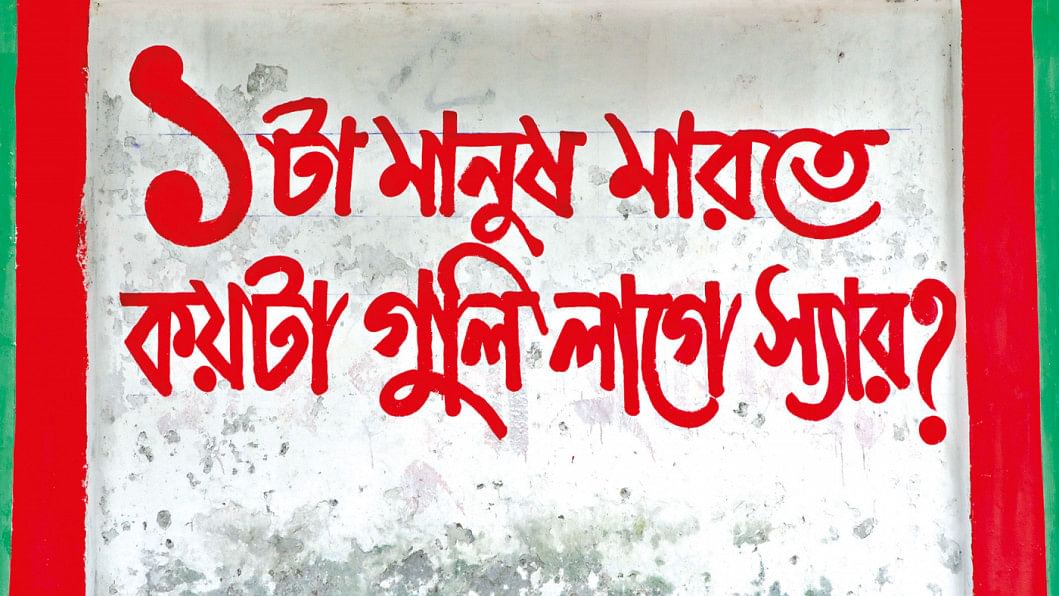
Mishu, who strongly believes that this graffiti should be preserved for documentation, is helping students finish the half-done walls and redo those that were erased with his illustration team. Other teams of artists are doing the same near Dhaka University, Agargaon, Mirpur, and Uttara to preserve the ethos of the movement.
Renowned performance artist Reetu Sattar agreed, noting that anarchism often casts away societal formalities. "Graffiti expresses a particular time and a society's deep feelings. It is a beautiful form of anarchism that captures a society's power, wrath, and humanity. It also helps to build opinions. These graffiti were drawn by the young generation, braving the fear of bullets. They represent a time when we adults chose to remain silent about the corruption and social atrocities committed by the party in power," she said, emphasising that these efforts should be recorded for historical reasons.
However, the younger generation believes it is time to say no to any form of extremism, whether political or religious. Morshed Mishu argues that it is truly the era of citizen journalism, where political cartoons, graffiti, and social media vlogs should become integral to the press.
"Talk about everything -- the good, the bad, and the ugly. Respect all opinions. We have seen enough socio-political tyranny. The current times demand a generational change and reform," Mishu said.
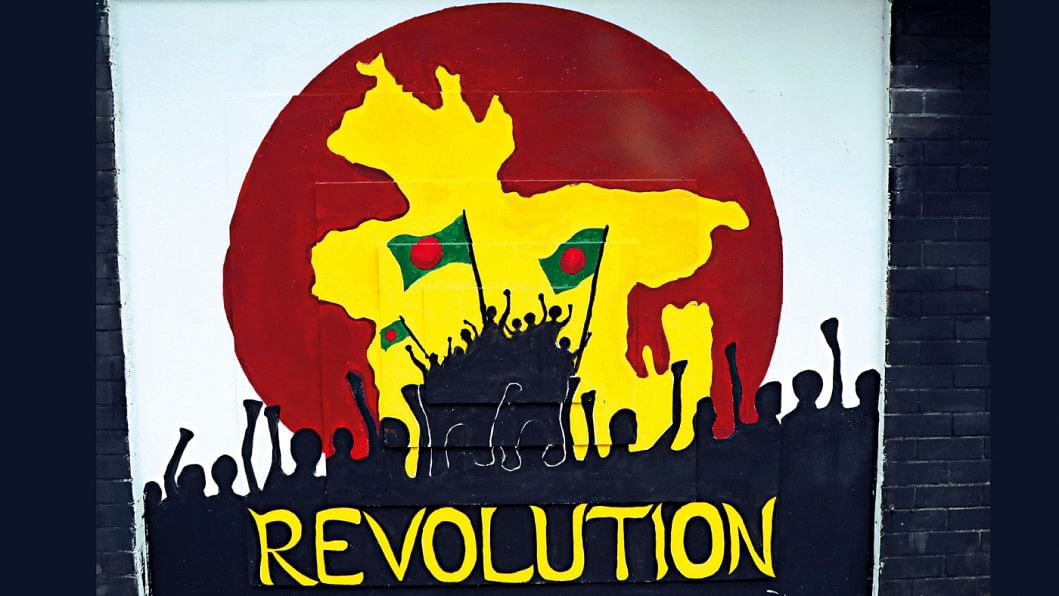

 For all latest news, follow The Daily Star's Google News channel.
For all latest news, follow The Daily Star's Google News channel. 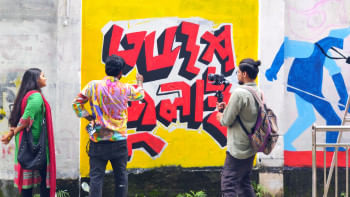



Comments